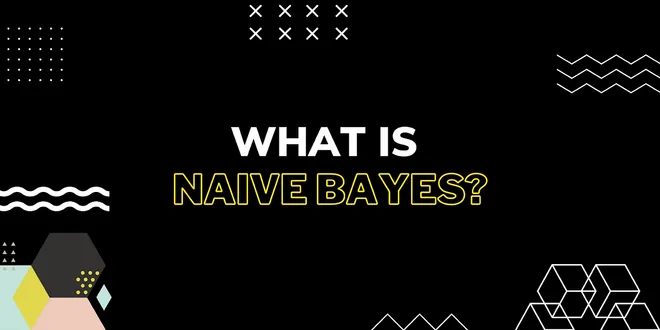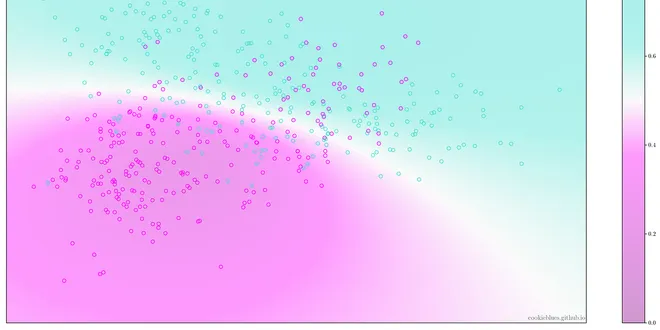Naive Bayes
Naive Bayes is a simple yet powerful probabilistic classification algorithm based on Bayes’ Theorem. It is widely used in machine learning for tasks such as text classification, spam detection, and sentiment analysis. The algorithm operates under the assumption that the features used for classification are independent of each other, which simplifies the computation of probabilities. Despite this “naive” assumption, Naive Bayes often performs surprisingly well, especially with large datasets. Its efficiency and effectiveness make it a popular choice for many real-world applications, particularly in natural language processing and data mining.

What is Naive Bayes?
An introduction to machine learning algorithms Naive Bayes algorithm is a supervised learning algorithm(probabilistic machine learning algorithm), which is based on Bayes theorem, used in a wide vari...
📚 Read more at Becoming Human: Artificial Intelligence Magazine🔎 Find similar documents

Naive Bayes Explained
Naive Bayes is a probabilistic algorithm that’s typically used for classification problems. Naive Bayes is simple, intuitive, and yet performs surprisingly well in many cases. For example, spam…
📚 Read more at Towards Data Science🔎 Find similar documents

(Gaussian) Naive Bayes
Naive Bayes is a widely used model in machine learning. Click here to learn more about the theory behind it, and how to implement it in Python.
📚 Read more at Towards Data Science🔎 Find similar documents

Naïve Bayes Algorithm
Naive Bayes is a classification technique that is based on Bayes’ Theorem with an assumption that all the features that predicts the target value are independent of each other. It calculates the…
📚 Read more at Analytics Vidhya🔎 Find similar documents

What’s so naive about naive Bayes’?
Naive Bayes (NB) is ‘naive’ because it makes the assumption that features of a measurement are independent of each other. This is naive because it is (almost) never true. Here is why NB works anyway…
📚 Read more at Towards Data Science🔎 Find similar documents

1.9. Naive Bayes
Naive Bayes methods are a set of supervised learning algorithms based on applying Bayes’ theorem with the “naive” assumption of conditional independence between every pair of features given the val......
📚 Read more at Scikit-learn User Guide🔎 Find similar documents

Naive Bayes Classification
Naive Bayes is a supervised learning classification. It is a probabilistic classifier based on Bayes theorem. The name naive stems from the fact that classifier assumes that pairs of features are…
📚 Read more at Analytics Vidhya🔎 Find similar documents

Naive Bayes: Intuition and Implementation
In a broad sense, Naive Bayes models are a special kind of classification machine learning algorithms. They are based on a statistical classification technique called ‘Bayes Theorem’. Naive Bayes…
📚 Read more at Towards Data Science🔎 Find similar documents

Understanding Naïve Bayes algorithm
Naïve Bayes is a classification algorithm that is a probabilistic classifier based on Bayes theorem. Before getting into the intricacies of Naïve Bayes, we first understand the Bayes theorem. Bayes…
📚 Read more at Towards Data Science🔎 Find similar documents

AI Anyone Can Understand: Part 10 — Naive Bayes
Naive Bayes is a way for computers to learn how to make predictions based on data. Imagine you are trying to guess what a toy is just by looking at it. You might look at different parts of the toy…
📚 Read more at Towards AI🔎 Find similar documents

A Machine Learning Roadmap to Naive Bayes
Naive Bayes is a probabilistic machine learning algorithm based on the Bayes Theorem, used in a wide variety of classification tasks. In this article, we shall be understanding the Naive Bayes…
📚 Read more at Analytics Vidhya🔎 Find similar documents

Naive Bayes
Throughout the previous sections, we learned about the theory of probability and random variables. To put this theory to work, let’s introduce the naive Bayes classifier. This uses nothing but probabi...
📚 Read more at Dive intro Deep Learning Book🔎 Find similar documents

